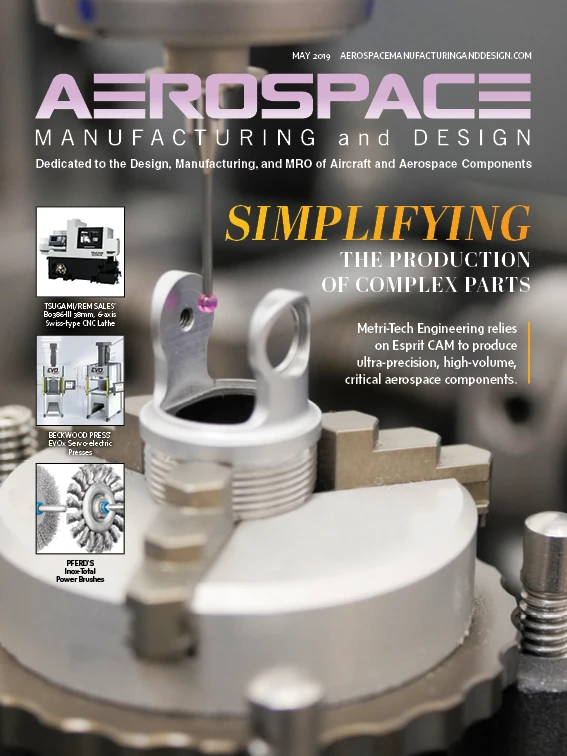
Factors beyond a metalworking operation’s control are often among the most damaging to profitability. Tariffs and the cost of coolant and fluids, two of the biggest market realities that aerospace parts manufacturers are dealing with in 2019, are unavoidable.
In March 2018, the United States imposed a 25% tariff on steel imports and a 10% tariff on aluminum imports from countries other than Canada and Mexico. The president defended the tariffs, saying they were necessary to protect domestic steel production facilities and reduce American reliance on imported metal.
Regarding coolants, cutting oils, and other metalworking fluids, many people in the machining industry think they are merely a necessary evil. Decision-makers in manufacturing operations often think of coolant only when there is a problem.
However, industry estimates indicate that metalworking fluids make up as much as 10% of the cost of a finished part. This includes the initial cost of the concentrate, housekeeping, cleaning, and disposal. For comparison, tooling only makes up about 6% of the cost of a finished part. When factoring in the increasing price of cutting oil concentrate and the rising costs of spent fluid disposal, the goal of any metalworking fluids management initiative should be to increase fluid life.

Spend money, make money
Given the correlation between capital expenditures and profit margins, investing in scrap metal processing and fluid recycling solutions can help a metalworking operation respond to market factors while bolstering the bottom line.
Scrap metal recycling begins with volume reduction. Turning and chip processing systems reduce small-to-medium volumes of turnings and bushy wads to flowable metal chips while separating chips from fluid, allowing manufacturers to increase machining scrap value and reuse cutting fluid.
Scrap removal systems typically include a crusher/wringer or a shredder/wringer, which process loose metal turnings to deliver dry, flowable, shovel-grade chips. They also reclaim up to 99% of coolants and cutting oils. Wringers and centrifuges offer another method of chip and fluid separation by using more than 600Gs of centrifugal force to create dry chips while reclaiming up to 99% of cutting fluid.
Compacting dry, loose chips into smaller, denser briquettes can increase metal scrap value. Briquetting machines compress metal chips, loose turnings, and swarf into near solid, dry pucks. This equipment provides two options: feed to furnace (scrap pucks are easy to re-melt, transport, or store for more floor space and a cleaner shop) or send for recycling (briquettes offer optimized container fill and bring higher value from the recycler because of their condensed volume). Briquetting machines that use two opposing hydraulic cylinders can press metal equally from both sides to create dry, compact pucks.
After the cutting oils are separated from the scrap, the right fluid management program (FMP) can decrease spending on new coolant purchases. Several equipment and system options are available that reduce costs associated with the mixing of fluids used for cooling, lubricating, and removing fines/cuttings from cutting zones, as well as those used in corrosion protection.
Centralized coolant recycling systems can reduce new fluid purchase costs up to 75% and reduce hazardous waste disposal costs up to 90% by removing tramp oils and suspended solids from contaminated coolant, controlling bacteria, and adjusting fluid concentration for fluid recovery. They can also prevent coolant rancidity when used with a coolant manager to inject ozone. Additionally, these recycling systems can extend tool life and help a shop reduce new tool purchases by 25%.
Magnetic separators prolong tool life and are well-suited to processes where ferrous contaminants are mixed with water-based coolants or straight cutting oils. They employ high-intensity ferrite or rare earth magnets within a fully energized rotating drum to continuously remove ferrous particles from the flow of liquid, reducing machine downtime by up to 50%. These systems are often used as a pre-filter to limit contaminants reaching subsequent filtration equipment.
Paper bed filters can extend tool life by an average of 27%, improve surface finish, and prolong coolant life by removing solids and other materials from all free-flowing industrial process liquids. Standard paper bed filtration systems have flow rates up to 130gpm. This allows for adjustments of micron clarity to achieve optimal removal of ferrous and non-ferrous metals as well as organic and inorganic contaminants, such as dirt, glass, rubber, and plastic.

Conclusion
Limited budgets in a metalworking operation are often caused by factors beyond the operation’s control. Therefore, financial decisions related to purchasing capital equipment tend to favor CNC machines, mills, lathes, band saws, and other front-line systems. However, systems that handle scrap metal and spent fluid at the back-end of the process are equally important to improving a shop’s profit margin, if not more so.
These systems can save money, generate revenue, and increase the value of the business. Prioritizing them requires a reversal of conventional wisdom in many cases. Doing so can be difficult, but ultimately it is a worthwhile approach when you consider the fast ROI and the increased value and efficiency a scrap handling and fluid recycling solution can deliver.

Explore the May 2019 Issue
Check out more from this issue and find your next story to read.
Latest from Aerospace Manufacturing and Design
- Revitalizing the Defense Maritime Industrial Base with Blue Forge Alliance
- Safran Defense & Space opens US defense HQ
- Two miniature absolute encoders join US Digital’s lineup
- Lockheed Martin completes Orion for Artemis II
- Cylinder CMMs for complex symmetrical workpieces
- University of Oklahoma research fuels UAS development
- Motorized vision measuring system
- Everyone's talking tariffs





